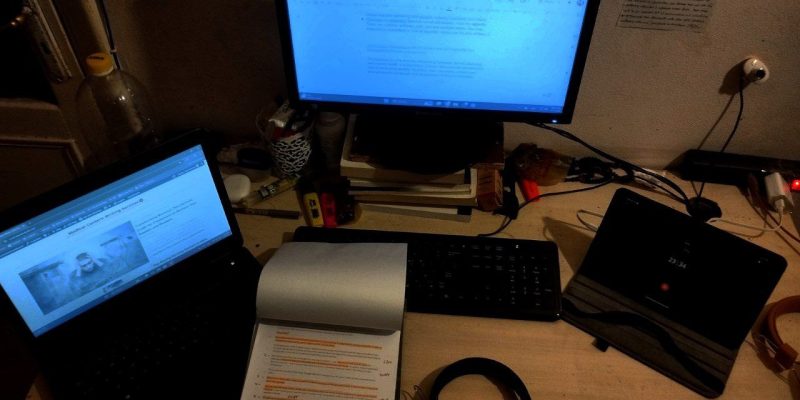Transforming Burnout: The Ultimate Guide for Freelancers to Reclaim Your Passion and Purpose.

I thought Landing clients and getting paid would be easy. A content writer coach influenced me with this magical words: Get your 1k in one month.
After three months of navigating, learning, and writing content, I felt disappointed, paralyzed, unmotivated, and completely blinded. Like any new freelancer, I was motivated and had high expectations.
My persistent desire to continue rather than step back and solve the problem worsened it.
I often felt overwhelmed. No matter how hard I worked, I got nowhere.
Unfortunately, becoming a freelancer requires consistent learning, resilience, and mindset shifting, even after a constant workflow, especially in medical content writing.
It wasn’t clear that I was experiencing burnout, but I knew something was wrong. Finally, I decided to take a recovery period and the first days were difficult.
The outcome of this recovery period was beneficial. I discovered many vital elements of a successful freelancer, such as relationships, smart work, consistency, work-life balance, and, most importantly, self-confidence.
What is Burnout?

Burnout refers to emotional, mental, and physical fatigue from prolonged stress, overwhelming workloads, or a lack of equilibrium.
This condition may be reflected in sensations of disconnection, decreased drive, and reduced performance outcomes.
Bornout is frequently observed in high-pressure fileds such as healthcare, freelancing, and any work, where relentless demands and pressure can become excessive and diffcult to manage and could increase the risk of deprssion.
How did I feel in that moment?
I felt physically weak and struggled to breathe, eat, or sleep. I was exhausted as if someone had just rescued me from drowning. Anxiety made it hard to sit still, and I felt restless.
Emotionally, I lost all motivation. I forced myself to work out of obligation, which decreased my productivity. I isolated myself, declined social invitations, and lost the empathy that is crucial for my work with patients. Overall, I was deeply depressed.
Here are the general signs and symptoms:
1. Emotional Exhaustion – Feeling drained, overwhelmed, or emotionally detached.
2. Reduced Productivity – Struggling to focus, meet deadlines, or complete tasks efficiently.
3. Detachment – Losing passion for work, feeling disconnected from clients or projects.
4. Physically – Headaches, insomnia, fatigue, or frequent illnesses.
5. Lack of Motivation – Struggling to find meaning or satisfaction in work.
Through these seven tips, you can prevent burnout
After experiencing burnout myself, I realized that there are specific strategies that can help. Here are the most effective steps I’ve found:
Note: If you don’t have a fixed but flexible schedule, you should make one immediately. Burnout is the ultimate result without a plan!
1. Workload and Expectations:
-
- Work-life balance: Despite having a set schedule, the amount or nature of the work could still result in stress. Assigning tasks to others, scaling specific projects, or pushing back deadlines might be necessary.
-
- Unattainable standards: Striving for perfection and setting overly ambitious expectations can elevate stress levels.
2. Relaxe:
-
- Resting is essential: Incorporate tasks that require minimal effort but help refresh you mentally and physically. Brief breaks of light physical movement, creative projects, or mindfulness practices can be more revitalizing than resting.
-
- Communication: Social interactions can help reduce feelings of stress and isolation.
3. Priorities:
-
- Reassess your objectives: Considering your existing obligations, you might need to modify your goals to suit your situation better. Concentrating on fewer tasks with greater focus instead of trying to do too much at once is perfectly acceptable.
-
- Decline more frequently: While this might be difficult, reducing your commitments is essential to prevent overwhelming your agenda.
4. Emotional Self-Care:
-
- Journaling: I observe trends that could influence my mental well-being by articulating my thoughts in a setting outside of work, as I’ve been doing daily.
-
- Seek Professional Support: If feelings of burnout continue, discussing them with a counselor or coach might help you better understand your triggers and potential solutions.
5. Work Environment:
-
- Environment matters: A stressful or cluttered work environment can drain your energy even with a solid schedule. Simplifying your workspace and reducing distractions help you focus and achieve mental clarity.
6. Set Boundaries:
-
- Strict work hours: Even though you have a schedule, ensure you mentally clock out when your workday ends. Do not check emails or think about work after hours.
-
- Digital detox: Try limiting your screen time after work to give your mind a break from constant stimulation.
7. Mindfulness Practices:
- Mindful breathing or meditation: Regular meditation or short mindfulness exercises throughout the day can help reset your mental state and lower stress.

By taking proactive steps and revisiting my priorities, I overcame burnout. I found balance in my medical studies and freelance work. With the right mindset and approach, you can do the same.
Implement these strategies and equip yourself to manage burnout. You may feel disappointed sometimes, but it’s normal. Remember, it’s not about a quick fix—it’s about adopting a sustainable lifestyle.
